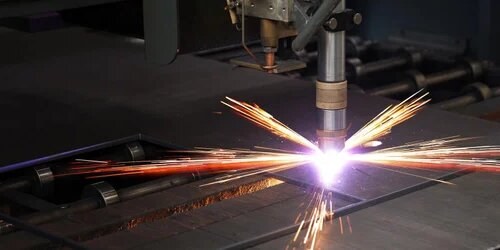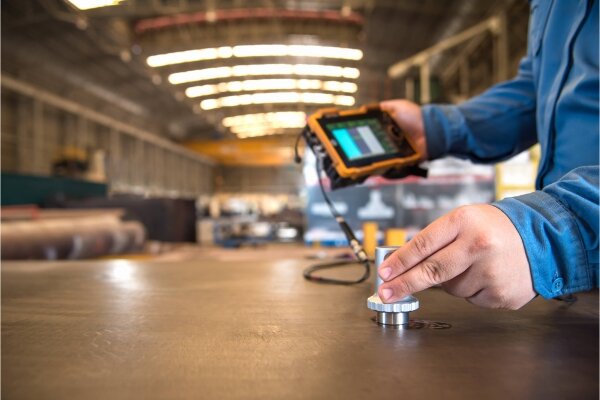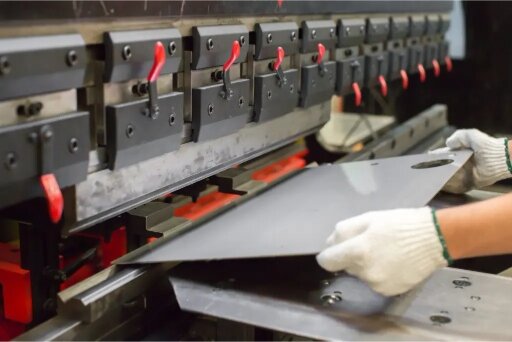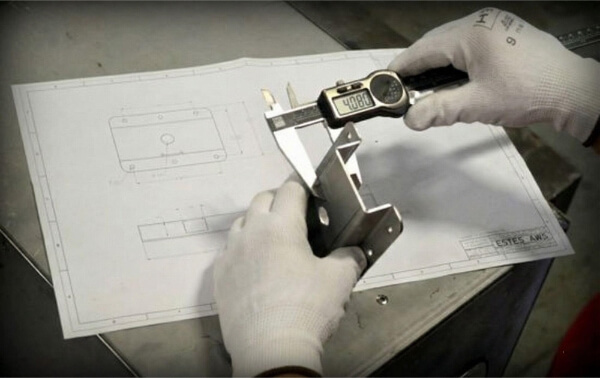Meeting local standards is a key concern for companies that import or make sheet metal parts for the Australian market. Parts that do not meet regulations can cause delays, add extra costs, or even lead to product recalls. Many businesses find it hard to locate reliable fabrication partners who fully understand the strict requirements of AS/NZS standards.
This article explains what Australian standards cover and how materials and processes are checked. It also highlights what importers and manufacturers should look for in a supplier. You will learn which materials, fabrication methods, and quality checks are needed to make sure parts perform well and meet regulatory rules.

Understanding Australian Standards for Sheet Metal Fabrication
Australian Standards cover every step of metal fabrication, from choosing materials to applying surface finishes. They set clear rules for strength, thickness, corrosion resistance, and weld quality.
AS/NZS Standards for Materials, Welding, and Coatings
The AS/NZS system combines Australian and New Zealand standards into one shared guideline. These standards help ensure consistency across both markets.
Key standards for metal fabrication include:
- AS/NZS 3679 and AS/NZS 3678: Define requirements for hot-rolled steel and plate materials.
- AS/NZS 1554: Covers welding procedures, weld quality, and testing methods.
- AS/NZS 5131: Relates to the fabrication and assembly of structural steelwork.
- AS/NZS 2312: Focuses on corrosion protection, including coatings and galvanizing.
These standards guide fabricators in selecting proper materials and methods for each application. They also describe how to inspect and test parts to confirm compliance.
Certification Bodies and Testing Requirements in Australia
Several certification bodies in Australia make sure metal products meet local standards. Organizations such as SAI Global, Bureau Veritas, and TÜV Rheinland carry out inspections and issue compliance certificates. These certificates prove that materials, welding, and coatings follow AS/NZS requirements.
Testing is a key part of this process. Common tests include tensile strength tests, weld inspections, coating thickness checks, and corrosion resistance tests. Some products also go through non-destructive testing (NDT) to detect internal flaws without damaging the part.
Precision Processes That Ensure Compliance
Fabrication processes must follow strict procedures to meet Australian standards. Every step—from cutting to finishing—affects the final quality and compliance of the product.
Fabrication Methods Aligned with Australian Standards
Laser cutting creates clean, precise edges while reducing material waste. Under AS/NZS 4024 safety standards, operators must follow proper machine safety and maintenance rules. Accurate cutting tolerances make sure each part fits correctly during assembly.
Bending shapes metal using press brakes or stamping tools. AS/NZS 5131 defines acceptable methods for bending and forming structural parts. Using the right tools and keeping machines calibrated helps prevent stress marks and ensures bend angles stay within required limits.
Welding is one of the most closely regulated stages in fabrication. AS/NZS 1554 sets rules for welding methods, electrode selection, and post-weld inspections. Certified welders must follow approved procedures to avoid weak joints or structural defects.
Finishing processes, such as powder coating, anodizing, or galvanizing, must meet AS/NZS 2312. These coatings protect parts from corrosion and extend their lifespan. Finishes are tested for thickness, adhesion, and consistency to maintain uniform quality.
Quality Control Steps Throughout the Production Process
Inspection starts with the raw materials. Each batch is checked against supplier certificates and AS/NZS specifications. During fabrication, dimensional checks confirm that parts remain within tolerance. Surface inspections catch scratches, deformations, or coating defects before shipment.
Testing includes tensile strength tests, weld inspections, and corrosion resistance evaluations. Non-destructive testing (NDT), such as ultrasonic or magnetic particle inspection, helps find hidden flaws without damaging the part. These tests follow standards like AS/NZS ISO 17638 and AS/NZS 1554.1.
Documentation ensures full traceability. Each production stage must have proper records, including material certificates, inspection reports, and test data. This documentation proves compliance with Australian standards and supports audits or certifications.

How Shengen Ensures Compliance with Australian Standards?
Meeting Australian Standards takes precision, consistency, and a solid understanding of compliance rules. We use internationally recognized systems to manage production and keep every step traceable.
ISO-Certified Production and Skilled Quality Engineers
Our production facilities are ISO 9001:2015 certified, which means we follow strict, standardized procedures for quality control and documentation. Each production batch includes inspection records, test results, and certificates of conformity. This information gives clients full visibility and confidence in the quality of their orders.
A team of skilled quality engineers oversees every stage of fabrication. They monitor cutting accuracy, weld strength, and coating consistency. Each inspection follows a checklist that matches both international and Australian standards. If any issue appears, it is corrected right away before production moves forward.
Partnerships with Certified Raw Material Suppliers
We only work with suppliers who are certified under AS/NZS and ISO standards. Every delivery comes with material test reports (MTRs) that confirm the metal’s mechanical properties and chemical composition. This ensures that all base materials already meet Australian standards before fabrication begins.
Our long-term supplier relationships help maintain consistent material quality from batch to batch. Whether the project uses stainless steel, aluminum, or mild steel, we make sure each sheet or coil meets AS/NZS specifications before processing.
What Australian Importers Should Look for in a Supplier?
A reliable supplier does more than produce good parts. They also provide full documentation, follow certified processes, and understand Australian standards. Choosing the right partner helps prevent compliance issues, customs delays, and costly rework.
Evaluating a Manufacturer’s Compliance Capability
Before placing an order, importers should check whether a manufacturer can meet AS/NZS and ISO requirements. A compliant supplier should have structured quality systems, certified materials, and traceable production records. Asking detailed questions early in the process helps confirm the supplier’s reliability and reduces the risk of non-compliance.
Material certificates and inspection reports are critical for Australian importers. These documents confirm that the metal used matches the required grade and meets AS/NZS standards. Each batch should include a Material Test Report (MTR) that lists the chemical composition, tensile strength, and heat number.
Importers should also request in-process inspection records. These records show whether the parts passed dimensional checks, surface inspections, and final quality tests. A complete documentation package makes it easier to prove compliance during customs clearance or third-party audits.
Tips for Smoother Import and Customs Clearance
Smooth importing starts with careful preparation and clear paperwork. Importers should:
- Confirm that all materials and finishes meet AS/NZS standards before shipment.
- Ensure every batch includes MTRs, inspection reports, and certificates of conformity.
- Work with logistics partners who have experience handling certified industrial goods.
- Keep digital copies of all compliance documents to speed up customs review.

The Benefits of Working with a Compliance-Focused Partner
Compliance is about more than paperwork. It affects product reliability, project timelines, and your company’s reputation. A partner who understands Australian standards helps you stay competitive and confident with every delivery.
Fewer Risks and Better Long-Term Reliability
A compliance-focused partner follows strict procedures from the start of production. They use certified materials, qualified welders, and documented inspection steps. This approach reduces the risk of part failure, shipment rejection, or costly redesigns.
Reliable processes also lead to consistent quality over time. When each batch meets AS/NZS requirements, products perform predictably in real-world use. Whether parts are for construction, machinery, or electrical systems, steady compliance builds trust and helps prevent warranty issues.
Cost Savings Through Reduced Rework and Faster Approvals
Non-compliance can cause expensive delays and rework. Components that fail inspection often need to be remade or re-certified, increasing both time and cost. A compliance-oriented supplier prevents these problems by ensuring all materials and processes meet standards before shipment.
Complete documentation—such as material certificates, weld test reports, and coating inspections—helps speed up product approvals. With everything properly certified, importers can clear customs faster and move into production sooner. Over time, working with a certified supplier lowers hidden costs and improves overall efficiency.
Strengthening Your Reputation in the Australian Market
In Australia, reputation matters as much as performance. Customers and regulators trust companies that can prove compliance with national standards. When your products consistently meet AS/NZS requirements, your brand stands out as reliable and professional.
A compliance-focused supplier becomes a long-term partner in protecting that reputation. They help ensure your products meet both technical and legal requirements, so you can focus on growth instead of quality disputes. Working with such partners shows your commitment to safety, reliability, and excellence in the Australian market.
How to Get Started with Shengen?
Working with Shengen is simple and transparent. Our goal is to guide your project from concept to production while meeting Australian compliance standards at every stage.
Submit Your Drawings and Compliance Requirements
Begin by sending your 2D and 3D drawings, along with any compliance details such as AS/NZS standards, material grades, or testing requirements. Our engineering team reviews each file carefully to understand your design, tolerances, and functional goals.
You can also share reference samples or photos if available. The more details you provide, the faster we can create an accurate production plan that meets your expectations.
Get a Detailed Quote and Material Recommendation
After reviewing your drawings, our team prepares a detailed quotation that outlines the fabrication process, lead time, and cost. We also suggest the most suitable materials for your application based on performance, corrosion resistance, and compliance needs.
If needed, we include test certifications, inspection plans, and packaging details to support your import process. Every quote is fully transparent—no hidden costs or unexpected charges.
Our production team handles each order with care, following strict ISO and AS/NZS standards. You’ll receive updates throughout the process, including fabrication progress, inspection results, and shipment information.
Contact us today to request a quote or discuss your fabrication project. Let’s build reliable, compliant parts for the Australian market together.
Hey, I'm Kevin Lee

For the past 10 years, I’ve been immersed in various forms of sheet metal fabrication, sharing cool insights here from my experiences across diverse workshops.
Get in touch

Kevin Lee
I have over ten years of professional experience in sheet metal fabrication, specializing in laser cutting, bending, welding, and surface treatment techniques. As the Technical Director at Shengen, I am committed to solving complex manufacturing challenges and driving innovation and quality in each project.



